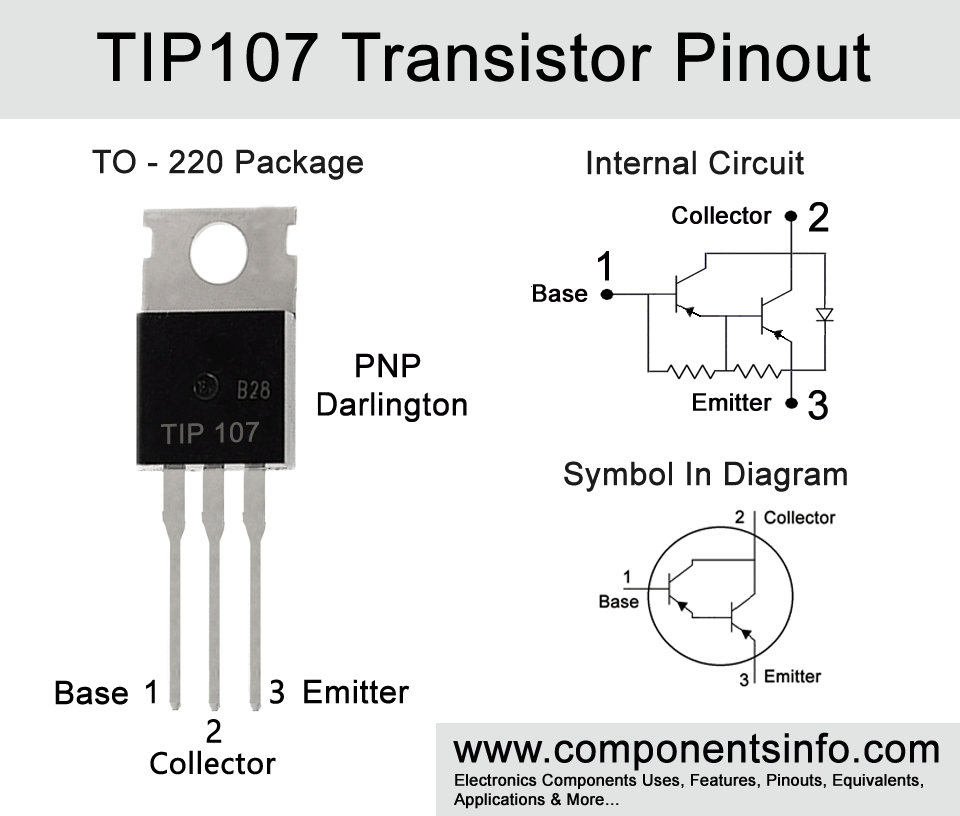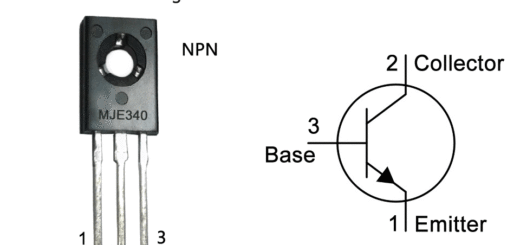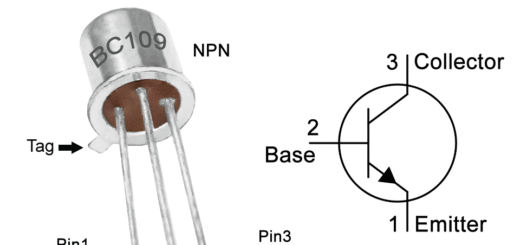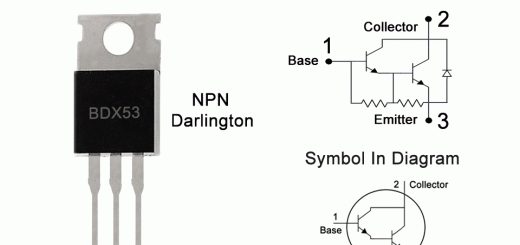TIP107 Pinout, Equivalent, Applications, Features and Other Details
Today we are going to discuss TIP107 pinout, equivalent, applications, features, and other important details about this PNP darlington transistor.
Features / Technical Specifications:
- Package Type: TO-220
- Transistor Type: PNP
- Max Collector Current(IC): –8A
- Max Collector-Emitter Voltage (VCE): –100V
- Max Collector-Base Voltage (VCB): –100V
- Max Emitter-Base Voltage (VEBO): –5V
- Max Collector Dissipation (Pc): 80 Watt
- Minimum & Maximum DC Current Gain (hFE): 1000 To 20000
- Max Storage & Operating temperature: -65 to +150 Centigrade
PNP Complementary:
NPN Complementary of TIP107 is TIP102
Replacement and Equivalent:
If you can’t find the TIP107 transistor then you can also use its exact match part numbers which are TIP105 and TIP106. The only major difference between them is the Collector-Emitter voltage. The TIP105 has collector-emitter voltage of 60V and the TIP106 has collector-emitter voltage of 80V therefore if your circuit works under 60V you can easily replace it with TIP105 and TIP106 and if your circuit works under 80V you can replace it with TIP106. Other equivalents are 2N6042, TIP34C, TIP607, 2SB712, 2SB1020, BDW74C and MJE1093.
TIP107 Transistor Explained / Description:
TIP107 is a PNP darlington transistor available in TO-220 package. Before starting the discussion about TIP107 is essential to get some knowledge about what a darlington transistor is. A darlington transistor is a transistor consists internally of two transistors in a single transistor package which are connected in a special way which results in increasing the gain many times as compared to a single transistor. TIP107 has also a gain of 1000 to 20,000. The max collector current of the transistor is -8A and the max collector-emitter voltage is -100V. The value of the collector current of a transistor determines how much load this transistor can handle and the value of collector to emitter voltage determines how much load voltage a transistor can handle. Therefore as the above collector current and collector-emitter voltage value this transistor is able to drive load of up to -8A and the load voltage can be up to -100V, but one thing should be kept in mind that the -8A load current and 100V load voltage are the absolute maximum values, the absolute maximum values are the max values of a transistor can handle but also provide stress on the transistor and may affect it in long run, therefore, it is always better to use it below its absolute max ratings.
Where We Can Use it & How to Use:
TIP107 transistor can be used for any type of general purpose switching, linear, and amplification requirements. It is a very reliable transistor to use in industrial equipment and devices. Due to its low collector-emitter saturation voltage, it can be used in a wide variety of portable and battery operated equipment and devices. Moreover with its low collector-emitter saturation voltage, it can also be used directly with microcontrollers, electronic platforms like Arduino and raspberry pi, etc. It can also be used as an amplifier or in the stage of a high power audio amplifier.
Applications:
Low speed switching
Driving or switching loads upto -8A
Audio amplifier circuits
Battery charger circuits
Motor driver circuits
Portable and battery operated applications
Industrial Applications
Educational Applications
How to Safely Long Run in a Circuit:
When we use a component properly it will serve us for years to come. Properly using a component means don’t put too much load on that component and always stay 20% below from its max ratings. The same goes for the TIP102 transistor, the max collector current of the transistor is -8A therefore do not drive load of more than -6400mA and the load voltage should be within -80V. Use a proper heatsink with the transistor and always store or use in temperature above -55 degree centigrade and below +150 degree centigrade.
.
Datasheet:
To download the datasheet just copy and paste the below link in your browser.
https://datasheetspdf.com/pdf-down/T/I/P/TIP107_FairchildSemiconductor.pdf



